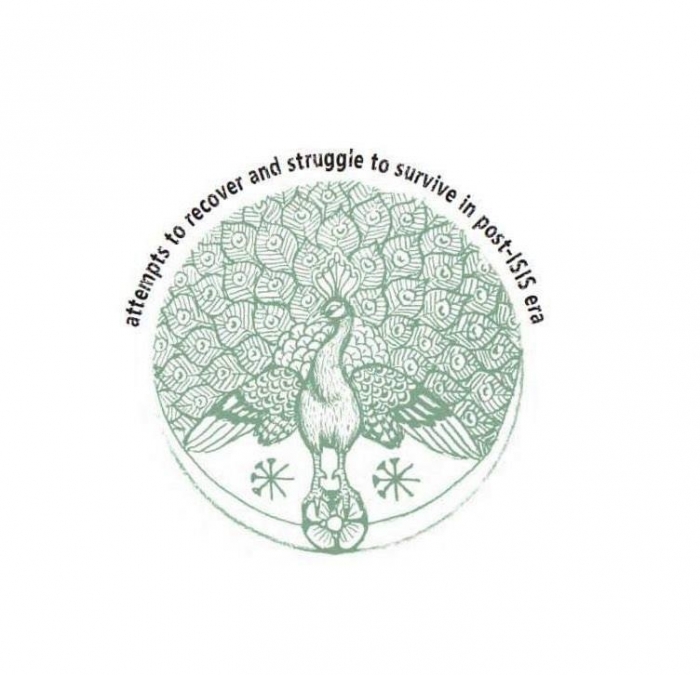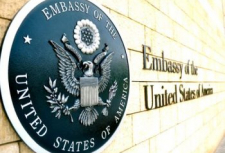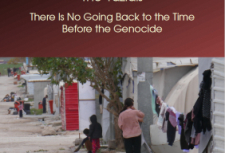Yazidis: Attempts to recover and struggle to survive in post-ISIS era

Katia Zagoritou
Part -1
Yezidis (Êzîdî), a small ethno-religious community, has attracted world attention due to the genocide perpetrated by ISIS against them following the assault launched on 3 August 2014 in Sinjar (Shangal) mountain. The Kurmanji-speaking community has experienced a long history of discrimination, persecutions and violence, mainly owing to the absence of a ‘holy’ book and the misinterpretation of their monotheist religion and in particular of their worship of the peacock angel (Melek Taws), considered as evil (Satan) by both Muslims and Christians. The community’s heartland has been Northern Iraq, Nineveh province, which constitutes one of the disputed territories between Baghdad and Erbil and was the most affected region during ISIS assault in 2014.
However, Yazidis now live mostly in the diaspora, largely in Germany, while some communities still exist in the Caucasus (in Armenia and Georgia) and in Syria, albeit in small numbers. Indeed, the ISIS attack in Sinjar, in the Nineveh province during the summer of 2014 led to an atrocious genocide and a mass exodus that have traumatized the Yazidi community, which additionally felt betrayed by the failure of the Peshmerga forces of the Kurdistan Democratic Party (KDP) to protect them. In fact, it was solely the People’s and Women’s Protection Units (YPG/J) from Rojava, in Northern Syria, alongside the Kurdistan Workers’ Party (PKK) militias who intervened and managed to rescue many Yazidis. Yazidis currently must deal with the aftermath of the 2014 genocide.
That is to say, the fate of 2,992 still missing people (out of 6,417 Yazidis abducted in 2014 ISIS assault), the exhumation of more than 70 mass graves which have been identified in the Sinjar region, the return to their places - since the majority of Sinjar’s Yazidis fled the region and are now in refugee camps in the Kurdistan Region of Iraq (KRI) and Turkey– and the future of the women victims of sexual violence and the children born by Yazidi mothers survivors raped by ISIS members.
Apart from Iraq, the Yazidi community is facing serious challenge also in Syria, where according the numbers given the Yazidi population vary from 3,000 to 50,000 persons, mostly in Afrin and in Cizîrê. Following the Turkish incursion and occupation in Afrin, in Northern Syria, many Yazidis were forced to flee in order to escape persecutions and forced conversions to Islam, while their houses were confiscated and their villages’ names (around twenty in the region) were given Arabic ones. Additionally, the imminent US troops’ withdrawal from Syria would endanger even more Yazidis who, labelled as ‘infidels’ by Arab Muslims, would become once again victims of violence.
Tags: #yazidisinfo #aboutyezidi #genocideezidi #Shangal #yezidireligious
Yazidis: Attempts to recover and struggle to survive in post-ISIS era

Katia Zagoritou
Part -1
Yezidis (Êzîdî), a small ethno-religious community, has attracted world attention due to the genocide perpetrated by ISIS against them following the assault launched on 3 August 2014 in Sinjar (Shangal) mountain. The Kurmanji-speaking community has experienced a long history of discrimination, persecutions and violence, mainly owing to the absence of a ‘holy’ book and the misinterpretation of their monotheist religion and in particular of their worship of the peacock angel (Melek Taws), considered as evil (Satan) by both Muslims and Christians. The community’s heartland has been Northern Iraq, Nineveh province, which constitutes one of the disputed territories between Baghdad and Erbil and was the most affected region during ISIS assault in 2014.
However, Yazidis now live mostly in the diaspora, largely in Germany, while some communities still exist in the Caucasus (in Armenia and Georgia) and in Syria, albeit in small numbers. Indeed, the ISIS attack in Sinjar, in the Nineveh province during the summer of 2014 led to an atrocious genocide and a mass exodus that have traumatized the Yazidi community, which additionally felt betrayed by the failure of the Peshmerga forces of the Kurdistan Democratic Party (KDP) to protect them. In fact, it was solely the People’s and Women’s Protection Units (YPG/J) from Rojava, in Northern Syria, alongside the Kurdistan Workers’ Party (PKK) militias who intervened and managed to rescue many Yazidis. Yazidis currently must deal with the aftermath of the 2014 genocide.
That is to say, the fate of 2,992 still missing people (out of 6,417 Yazidis abducted in 2014 ISIS assault), the exhumation of more than 70 mass graves which have been identified in the Sinjar region, the return to their places - since the majority of Sinjar’s Yazidis fled the region and are now in refugee camps in the Kurdistan Region of Iraq (KRI) and Turkey– and the future of the women victims of sexual violence and the children born by Yazidi mothers survivors raped by ISIS members.
Apart from Iraq, the Yazidi community is facing serious challenge also in Syria, where according the numbers given the Yazidi population vary from 3,000 to 50,000 persons, mostly in Afrin and in Cizîrê. Following the Turkish incursion and occupation in Afrin, in Northern Syria, many Yazidis were forced to flee in order to escape persecutions and forced conversions to Islam, while their houses were confiscated and their villages’ names (around twenty in the region) were given Arabic ones. Additionally, the imminent US troops’ withdrawal from Syria would endanger even more Yazidis who, labelled as ‘infidels’ by Arab Muslims, would become once again victims of violence.
Tags: #yazidisinfo #aboutyezidi #genocideezidi #Shangal #yezidireligious

























